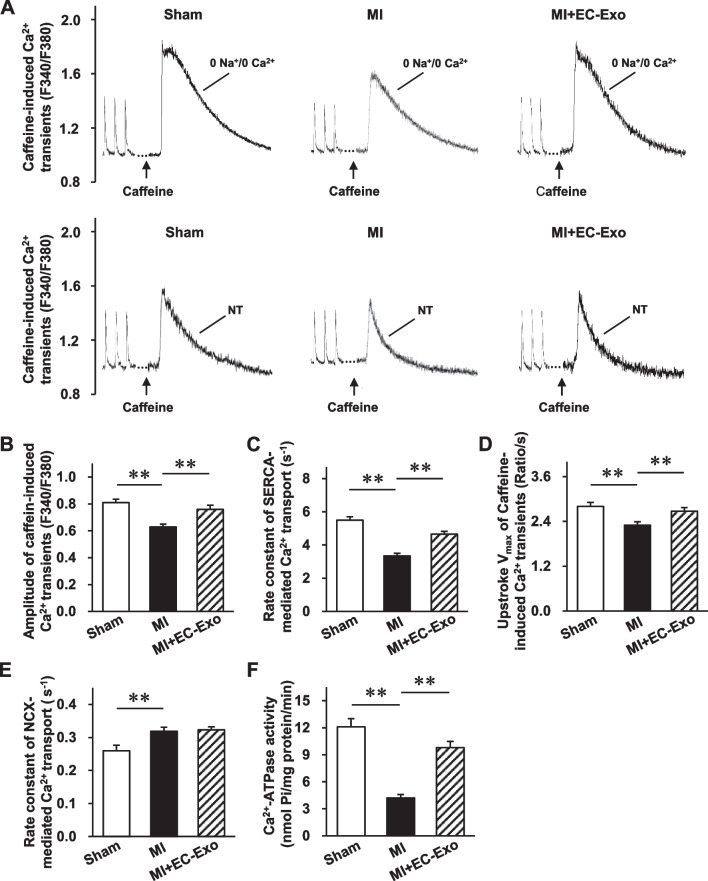Fig. 5.
Sarcoplasmic reticulum (SR) Ca2+ content and Ca2+ transport rate assessments in isolated cardiomyocytes after MI. Ca2+ transients were evoked by 10 mM caffeine in ventricular myocytes from the sham group, MI group, and MI + EC-Exo group on day 28 after MI or sham surgery. A Representative traces of Ca2+ transient during caffeine-induced contraction in 0 Na+/0 Ca2+ Tyrode’s solution or normal Na+/Ca2+ Tyrode’s solution (NT). B Quantification of the amplitude of caffeine-induced Ca2+ transients in 0 Na+/0 Ca2+ Tyrode’s solution. C Rate constant of SERCA-mediated Ca2+ transport (the difference between the rate constant of caffeine-evoked Ca2+ transients and electric stimulation-evoked Ca2+ transients in NT solution). D Maximum upstroke velocity (Vmax) of caffeine-induced Ca2+ transient in 0 Na+/0 Ca2+ Tyrode’s solution. E Rate constant of Na+/Ca2+ exchanger-1 (NCX-1)-mediated Ca2+ transport (the difference between delay rate constant of caffeine-evoked Ca2+ transients in NT solution and in 0 Na+/0 Ca2+ solution). F SERCA activity was accessed using a Ca2+-pump ATPase enzyme assay kit. Quantitative data are presented as mean ± SEM. A total of 40–44 cardiomyocytes from four different hearts were measured in each group. Significance was evaluated via one-way ANOVA followed by Tukey’s post hoc test in (B–F). **p < 0.01

